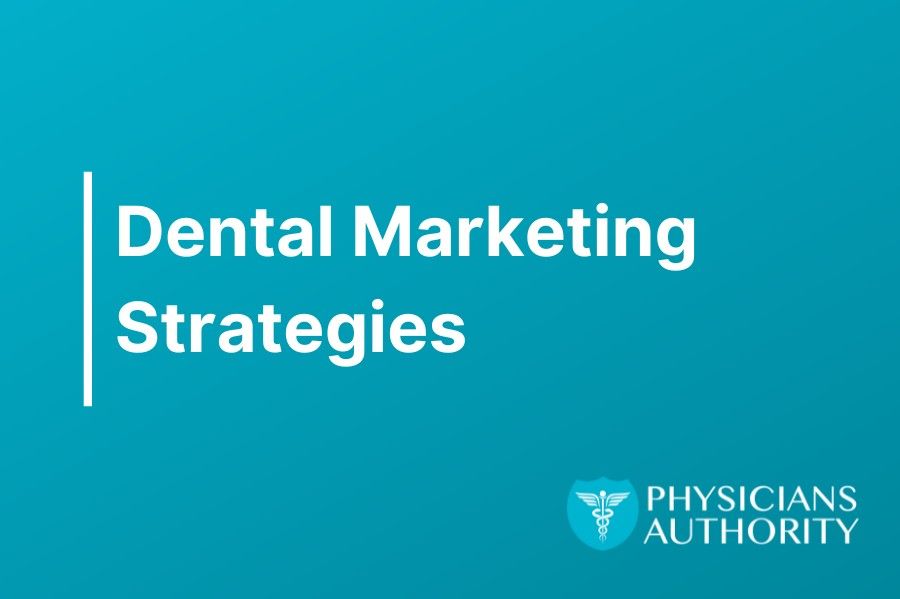
Dental Marketing Strategies for Practice Growth
Page Contents
Top 10 Dental Marketing Strategies for Practice Growth
Effectively marketing a dental practice is crucial for attracting and retaining patients in a competitive field. Identifying the right marketing strategies can be a challenge; however, implementing these top 10 strategies can help a practice stand out, reach the target audience, and promote a professional image. Physicians Authority is the best dental marketing expert agency for your practice. You can kickstart all of the dental marketing strategies below on your own or we will successfully do the right ones for your dental practice. Do you want to spend time on your business or in your business? All it takes is one phone call to start the best decision you will ever make for your practice today.
Develop a Comprehensive Marketing Plan
Creating a comprehensive Internet marketing plan is the first step in dentist marketing. This plan should outline goals, a target audience, and marketing strategies. A unique selling proposition (USP) and key differentiators should be identified to emphasize what sets the practice apart from competitors. The marketing plan must also include a mix of online and offline tactics, a content calendar, and a budget to guide efforts.
Custom WordPress Websites for Dentists
A well-designed, high-performing website is essential for dentists looking to attract new patients and grow their practice. Physicians Authority specializes in creating WordPress websites for dentists that not only look great but also rank faster and deliver the speed that Google loves.

Here are some reasons why dentists should consider having their website built by Physicians Authority:
- Fast-loading websites: Google prioritizes websites that load quickly and provide a smooth user experience. Physicians Authority designs websites that offer top-tier performance, resulting in faster load times that are favored by Google’s search algorithms. This enhances the site’s search engine rankings and helps attract more organic traffic.
- SEO and content optimization: A strong SEO strategy is crucial for dental practices aiming to rank higher in search results. Physicians Authority’s team of experts incorporates the latest SEO best practices, ensuring that your website is optimized for targeted keywords, relevant content, and local search. This helps improve visibility, drive more traffic, and increase the likelihood of converting website visitors into new patients.
- Internal linking structure: An optimized internal linking structure can significantly impact a website’s search engine ranking. Physicians Authority designs dental websites with a well-structured internal linking strategy, which not only improves the user experience but also helps search engines better understand the site’s content, boosting its rankings in search results.
- Optimized images: High-quality images are important for creating an appealing and professional-looking website. However, large image files can slow down a website’s load time, negatively impacting the user experience and search engine rankings. Physicians Authority optimizes images for both visual appeal and fast load times, ensuring that the website looks great without sacrificing performance.
- WordPress platform: WordPress is a popular, user-friendly content management system (CMS) that allows dentists to easily manage and update their website content without needing extensive technical knowledge. Physicians Authority specializes in designing WordPress websites, providing dental practices with a website that is not only visually appealing but also easy to maintain.
- Customized design: Physicians Authority designs custom websites that reflect the unique identity of each dental practice. By creating a visually appealing, user-friendly, and professional online presence, dental practices can differentiate themselves from competitors and foster trust among prospective patients.
- Mobile responsiveness: With the majority of users accessing the internet through mobile devices, it is crucial for dental websites to be mobile-responsive. Physicians Authority ensures that their websites are fully optimized for mobile devices, delivering a seamless user experience across all screen sizes.
- Ongoing Support, Updates and Secure: As a full-service web design agency, Physicians Authority provides ongoing support and updates to ensure that your dental practice’s website remains current with industry best practices and Google’s evolving algorithms.
In summary, a dental practice’s online presence is vital to attracting new patients and growing the business. By choosing Physicians Authority to design a WordPress website that combines visual appeal, fast performance, and optimized SEO, dentists can significantly improve their search engine rankings, drive more traffic, and increase the likelihood of attracting new patients.
Optimize Dentist Website for Search Engines (SEO)
A dental practice website serves as a primary touchpoint for prospective patients. Optimizing the website for search engines can be achieved by incorporating relevant keywords, meta tags, and high-quality content. Ensuring the website is mobile-friendly, fast-loading, and easy to navigate contributes to better search engine rankings and a better user experience.

Search engine optimization (SEO) is a critical component of a dentist’s digital marketing strategy, as it helps improve the visibility of the practice’s website in search engine results. When implemented effectively, SEO can generate more organic traffic, attract potential patients, and increase leads. Here’s how dentists can leverage SEO services for lead generation:
Perform keyword research. Conduct thorough keyword research to identify relevant, high-intent keywords related to dental services, treatments, and procedures. Focus on long-tail keywords and local search terms (e.g., “teeth whitening in [city]” or “family dentist near me”) to target potential patients in the area.
- Optimize website content: Create high-quality, informative, and engaging content that addresses the needs and concerns of potential patients. Incorporate target keywords naturally into the content, including headings, body text, and image alt tags, to improve search engine rankings. Additionally, ensure that the content is well-structured and easy to read.
- Optimize meta tags: optimize meta tags, such as title tags and meta descriptions, for target keywords to enhance search engine visibility. Make sure the title tags are unique and accurately represent the content on each page, while the meta descriptions should provide a concise summary of the page and include a call-to-action.
- Create a mobile-friendly, fast-loading website: Ensure that the dental practice website is mobile-friendly, responsive, and fast-loading, as these factors contribute to a better user experience and search engine rankings. Utilize tools like Google’s Mobile-Friendly Test and PageSpeed Insights to evaluate and optimize the site’s performance.
- Implement local SEO: Local SEO is vital for attracting new leads for your dental practice’s service area. Optimize the Google My Business (GMB) listing by providing accurate and up-to-date information, adding high-quality images, and collecting and managing reviews. Include local search terms and schema markup on the website to improve local search visibility.
- Build high-quality backlinks: Earn high-quality backlinks from reputable, relevant websites to increase the practice’s domain authority and search engine rankings. Collaborate with local businesses, participate in community events, or create valuable content that other websites want to link to.
- Optimize website architecture: Create a logical website architecture with clear, easy-to-follow navigation to improve user experience and search engine crawlability. Use a hierarchical structure with proper URL structures, breadcrumb navigation, and internal linking to guide users and search engines through the site.
- Regularly monitor and analyze performance: Utilize tools like Google Analytics and Google Search Console to track website performance, search traffic, and rankings. Regularly analyze the data to identify opportunities for improvement and make data-driven decisions to optimize the SEO strategy.
By implementing these SEO strategies, dentists can improve the search engine visibility of their websites, generate more organic traffic, and ultimately increase leads and patient acquisition. It’s essential to stay up to date with the latest SEO best practices and continuously optimize the website to maintain and improve search engine rankings.
Engage Potential Leads with Educational and Interest Dental Content Marketing
Creating and sharing valuable, informative, and engaging content is essential for attracting and retaining patients. A content marketing strategy should include blog posts, social media updates, email newsletters, and multimedia, such as videos and podcasts. Content should address common dental concerns, offer preventive care tips, and showcase the services and technologies available at the practice.

Creating targeted service content is an effective way for dentists to generate more leads by showcasing their expertise, addressing potential patients’ concerns, and highlighting the unique benefits of their services. By focusing on the specific services offered and tailoring the content to the target audience, dentists can better engage and connect with potential patients.
Here are some dental marketing strategies for creating targeted service content to generate more leads:
- Identify core services and audience needs: Begin by listing the core services offered by the dental practice and identifying the needs, concerns, and questions of the target audience related to each service. This will help in creating content that is both relevant and engaging.
- Create detailed service pages: Develop individual service pages on the practice’s website, providing in-depth information about each dental service, treatment, or procedure. Include details on the process, benefits, costs, and any frequently asked questions (FAQs). Incorporate relevant keywords and optimize on-page SEO elements to improve search engine visibility.
- Develop educational blog posts and articles: Write informative and engaging blog posts or articles that address the concerns and questions of potential patients. Offer insights into specific dental treatments, preventive care tips, and advancements in dental technology. By providing valuable content, dentists can showcase their expertise and build trust with their audience.
- Leverage multimedia content: Utilize various multimedia formats, such as videos, infographics, and podcasts, to communicate information about dental services. Creating instructional videos or hosting a podcast that discusses dental topics can help reach a wider audience and cater to different content preferences.
- Share success stories and case studies: Share success stories, case studies, or before-and-after photos to demonstrate the results and effectiveness of dental treatments. These stories can help potential patients visualize the benefits of specific services and build trust in the practice’s ability to deliver high-quality care.
- Use email marketing to promote services: Send targeted email campaigns to existing and potential patients, highlighting specific dental services, promotions, or events. Segment the email list based on demographics, interests, and previous treatments to ensure the content is relevant and engaging for each recipient.
- Share content on social media: Promote service-related content on social media platforms, such as Facebook, Instagram, and LinkedIn, to reach a wider audience. Use eye-catching visuals, informative captions, and relevant hashtags to increase the visibility and engagement of the posts.
- Collaborate with local influencers and partners: Partner with local influencers, bloggers, or other healthcare professionals to create and share content about dental services. This can help expand the audience and reach potential patients who may not be aware of the dental practice and its services.
- Track and measure performance: Use analytics tools to track and measure the performance of targeted service content. Analyze engagement, conversion rates, and lead generation to identify which types of content are most effective and make data-driven decisions for future content creation.
By creating targeted service content that addresses the needs and concerns of potential patients, dentists can showcase their expertise, build trust, and generate more leads for their practice. Regularly reviewing and updating content, as well as staying up to date with industry trends and best practices, will help maintain relevance and effectiveness in the long term.
Establish a Strong Dental Social Media Presence
A strong presence on social media platforms like Facebook, Instagram, Twitter, and LinkedIn can be established by regularly posting updates, sharing informative content, and engaging with followers. This not only boosts the practice’s online visibility but also helps build trust and credibility with the audience. Incorporating social media advertising to expand reach and target specific demographics is also recommended.
Targeting high-income patients on social media can be an effective way for dentists to generate more leads and increase the revenue potential of their practice. By focusing on the preferences and interests of high-income individuals, dentists can create a tailored social media strategy that appeals to this specific audience.

Here are some dental marketing strategies for targeting high-income patients on social media platforms:
- Select appropriate social media platforms: Choose the social media platforms frequented by high-income individuals. While Facebook, Instagram, and LinkedIn are popular among various income groups, LinkedIn has a higher concentration of professionals and high-income users.
- Create high-quality, professional content: high-income patients typically have higher expectations and seek top-quality dental services. Therefore, produce high-quality content that reflects the professional image of the practice. Share informative articles, visually appealing images, and videos showcasing the dental office’s advanced technology and comfortable environment.
- Focus on premium services and treatments: Highlight premium dental services, such as cosmetic dentistry, implants, and advanced orthodontics, which may be more appealing to high-income patients. Share success stories, testimonials, and before-and-after photos to showcase the quality of these services.
- Use demographic targeting for social media ads: When creating social media ad campaigns on platforms like Facebook and Instagram, leverage demographic targeting options to reach high-income users. Target users based on factors such as income, education, job title, and interests. A/B test different ad creatives and targeting options to optimize the campaign’s performance.
- Engage with high-income individuals and communities: Identify and interact with social media groups, pages, or profiles related to luxury goods, services, or interests that attract high-income individuals. Participate in relevant conversations, share valuable insights, and position the dental practice as a high-end service provider.
- Collaborate with influencers and luxury brands: Partner with influencers, local luxury brands, or high-end businesses that cater to high-income clients. Engage in cross-promotions or joint campaigns that can introduce the dental practice to a new, affluent audience.
- Highlight the personalized experience: high-income patients often expect a personalized, high-quality experience. Share content that emphasizes the personalized care, attention to detail, and exceptional customer service offered by the dental practice.
- Utilize LinkedIn to connect with professionals: LinkedIn is an ideal platform to connect with professionals and high-income users. Share informative articles, industry news, and insights to establish the dentist’s expertise and credibility. Engage with users by participating in relevant LinkedIn groups and sharing content that resonates with the professional audience.
- Monitor and respond to reviews: Maintain an active presence on review platforms such as Google My Business and Yelp, as high-income patients may rely on reviews to select a dental practice. Respond to reviews professionally and address any concerns or issues raised to maintain a positive online reputation.
By implementing these strategies, dentists can effectively target high-income patients on social media, showcasing the quality of their services and the personalized experience they offer. Continuously monitoring and optimizing social media campaigns and engaging with the target audience will help generate more leads and increase the practice’s revenue potential.
Some of these might not apply to your dental practice, but this is a great overview of how a dental practice can use very targeted social media strategies to reach higher-income potential patients.
Implement an Exciting Dentist Referral Program
A referral program encourages existing patients to recommend the practice to friends and family. Offering incentives, such as discounts on dental services or merchandise, encourages referrals. Rewarding loyal patients and attracting new ones through word-of-mouth marketing is achieved this way.
A referral program is an effective way for dentists to acquire new patients by leveraging the positive experiences and recommendations of their current patients. By offering incentives and creating a well-structured referral program, dentists can encourage existing patients to bring in their family members and friends.

Here are dental marketing strategy ideas for developing an impactful dentist referral program:
- Incentivize referrals: Offer incentives to patients who refer friends and family to the dental practice. The incentives can include complimentary services, loyalty program points, or exclusive gifts. Choose incentives that are attractive to your patient base and comply with any applicable guidelines or regulations.
- Simplify the referral process: Make the referral process as easy as possible for patients by providing referral cards, custom URLs, or referral codes. Streamline the process to minimize friction and encourage participation.
- Track referrals: Implement a referral tracking system to monitor the success of the referral program. This can be done through a customer relationship management (CRM) system or referral management software. Tracking referrals allows dentists to measure the program’s effectiveness and make necessary adjustments.
- Promote the referral program: Actively promote the referral program to existing patients through multiple channels, such as in-office signage, appointment reminders, email newsletters, and social media. Ensure that patients are aware of the program and its benefits.
- Encourage referrals during positive interactions: Request referrals during moments when patients are most satisfied with their experience, such as after a successful treatment or a pleasant appointment. This increases the likelihood that they will refer others to the practice.
- Offer tiered rewards: Create a tiered reward system that provides greater incentives for patients who refer multiple new clients. This can motivate patients to continue referring friends and family, leading to greater growth for the practice.
- Acknowledge and thank referring patients: Show appreciation for patients who participate in the referral program by sending thank-you notes, acknowledging their efforts during appointments, or featuring them in newsletters or social media posts.
- Foster a sense of community: Encourage patients to bring their friends and family by creating a sense of community within the practice. Host patient appreciation events, educational seminars, or charity drives to engage with current patients and attract their family members and friends.
- Share patient testimonials and success stories: Highlight the positive experiences of current patients through testimonials and success stories on the practice’s website, social media, or email newsletters. This can inspire existing patients to share their own experiences and refer others to the practice.
- Train staff to request referrals: Equip the dental practice staff with the necessary skills to request referrals professionally and politely. Provide guidelines and training on how and when to ask for referrals and emphasize the importance of the referral program to the practice’s growth.
A well-structured and well-executed referral program can significantly contribute to a dental practice’s growth by tapping into the power of positive patient experiences and recommendations. By incentivizing referrals, simplifying the process, and actively promoting the program, dentists can acquire new patients from their existing patient base and expand their practice.
Participate in Local Events and Sponsorships
Involvement in the community can be increased by participating in local events, sponsoring sports teams or charity events, and collaborating with other local businesses. Increased practice visibility, an enhanced reputation as a community supporter, and connections with potential patients can result from these activities.
Participating in local events and sponsorships can help dental practices increase their visibility, strengthen their reputation, and build relationships with community members. By attending and supporting these events, dentists can demonstrate their commitment to the local community and generate positive word-of-mouth.

Here are some dental marketing strategies that include types of local events and sponsorships a dental practice can consider:
- Community health fairs: Participate in or sponsor local health fairs, offering free dental screenings, consultations, or educational materials. This can showcase the practice’s expertise and foster relationships with potential patients.
- School events: Partner with local schools to provide dental education sessions, sponsor sports teams, or support fundraising events. This can create a positive association between the dental practice and the local school community.
- Charity events: Attend or sponsor charity events, such as walks, runs, or fundraisers, to demonstrate the practice’s commitment to giving back. This can help raise awareness of the practice while also supporting a good cause.
- Local festivals and street fairs: Set up a booth at local festivals, street fairs, or farmers’ markets to engage with residents, distribute promotional materials, and offer dental care information. This can help increase the practice’s visibility within the community.
- Chamber of Commerce events: Join the local Chamber of Commerce and participate in their networking events and initiatives. This can help establish connections with other local businesses and professionals.
- Dental health month activities: In recognition of National Children’s Dental Health Month or other dental health awareness initiatives, host events, workshops, or seminars at the practice or partner with local organizations. This can help educate the community about dental health and position the practice as a trusted resource.
- Senior center events: Partner with local senior centers to offer educational presentations, workshops, or dental screenings. This can help build relationships with an important segment of the local population.
- Sponsor local sports teams: Sponsor local sports teams or athletic events, such as youth leagues, charity races, or amateur competitions. This can help increase the practice’s visibility and demonstrate a commitment to promoting healthy lifestyles.
- Collaborate with other healthcare providers: Partner with other healthcare providers, such as physicians, chiropractors, or physical therapists, for joint events or workshops. This can help foster cross-referral relationships and expand the practice’s network.
- Offer dental care for underprivileged community members: Partner with local nonprofit organizations to provide free dental care or education for underprivileged community members. This can create goodwill within the community and generate positive media coverage.
By attending and supporting local events and sponsorships, dental practices can strengthen their connection to the community and generate positive word-of-mouth. This can help build the practice’s reputation, attract new patients, and demonstrate a commitment to the local community.
Utilize Highly Converting Email Marketing Strategies with Your Current Dental Patient List
An email marketing strategy helps to communicate with patients regularly. Informative newsletters, appointment reminders, special offers, and updates on new services or technologies can be sent via email. Personalized emails and segmented patient lists ensure relevant content reaches the appropriate audience.
Dentists can leverage their existing patient list to generate more business by focusing on patient retention, relationship building, and referral marketing. The goal is to create a positive and memorable experience for patients, encouraging them to continue using the dental practice’s services and to refer friends and family.

Here are some dental marketing strategies to capitalize on the current patient list without offering coupons or discounts:
- Personalized follow-up and communication: Maintain regular communication with patients through personalized emails, text messages, or phone calls. Send appointment reminders, dental checkup suggestions, and birthday wishes to show that the practice cares about their patients’ well-being.
- Engage through educational content: Share informative content, such as blog posts, newsletters, or videos, with patients to keep them informed about dental health, new services, or advancements in dental technology. Providing valuable information can help strengthen the relationship and encourage patients to seek the practice’s services when needed.
- Request patient feedback: Actively seek feedback from patients to identify areas for improvement and to demonstrate that their opinions are valued. Use surveys, online forms, or follow-up calls to collect feedback and implement necessary changes based on the insights gathered.
- Encourage referrals: Implement a referral program that incentivizes patients to refer friends and family to the practice. Instead of offering discounts, consider providing value-added benefits such as a complimentary oral care kit, priority scheduling, or free teeth cleanings for successful referrals.
- Offer loyalty programs or membership plans: develop loyalty programs or membership plans that reward patients for their continued patronage. Benefits may include exclusive access to new services, priority appointments, or enhanced patient care experiences.
- Strengthen online presence: Encourage satisfied patients to leave positive reviews on Google My Business, Yelp, and social media platforms. A strong online reputation will not only help retain existing patients but also attract new ones.
- Host patient appreciation events: Organize events, such as open houses, educational seminars, or charity drives, to engage with patients and demonstrate appreciation for their loyalty. These events can also serve as networking opportunities to meet patients’ friends and family members who may be potential new clients.
- Implement targeted email marketing: segment the patient list based on factors such as demographics, interests, and previous treatments. Create targeted email campaigns to promote relevant services, educate patients, or share practice news and updates.
- Utilize social media engagement: Encourage patients to follow the dental practice on social media platforms and actively engage with them through likes, comments, and shares. Share content that resonates with the target audience and encourages interaction, such as dental tips, behind-the-scenes insights, or patient success stories.
By focusing on patient retention, relationship building, and referral marketing, dentists can effectively generate more business from their existing patient list without relying on coupons or discounts. These strategies foster a loyal patient base and create opportunities for practice growth through positive word-of-mouth and referrals.
Encourage Online Reviews and Testimonials the Day of Their Visit
Positive reviews and testimonials from satisfied patients significantly impact a practice’s reputation and credibility. Patients should be encouraged to leave reviews on platforms like Google, Yelp, and Facebook. Sharing positive testimonials on the website and social media channels is advised. Addressing negative reviews professionally and taking steps to resolve any issues raised is also essential.
Encouraging happy patients to leave positive reviews on social media and business listings can significantly impact a dental practice’s online reputation, helping future patients make informed decisions.

Here are some dental marketing strategies for dentists to solicit great reviews from satisfied patients:
- Create a comfortable and open environment: Ensure that patients feel comfortable and valued during their visits. An exceptional patient experience, combined with open communication, paves the way for asking for reviews later.
- Request reviews at the right time: Timing is crucial when asking for reviews. Ideally, ask for a review when the patient is most satisfied with their experience, such as after a successful treatment or a pleasant appointment.
- Personalize the request: When asking for a review, personalize the request by mentioning the specific service provided and expressing genuine appreciation for their feedback. A personalized approach can encourage patients to share their positive experiences.
- Train staff to request reviews: Train the dental practice staff to request reviews as part of their interactions with patients. Ensure that they understand the importance of online reviews and are equipped to ask for them politely and professionally.
- Simplify the review process: Make it easy for patients to leave a review by providing direct links to social media pages and business listings. Send follow-up emails or text messages with clear instructions and clickable links to encourage patients to share their feedback.
- Utilize review generation tools: leverage review generation tools or platforms that automate the process of sending review requests to patients. These tools can help streamline the process and improve response rates.
- Display existing reviews: Showcase positive reviews on the dental practice’s website and social media pages. This demonstrates transparency and encourages other patients to share their experiences as well.
- Respond to reviews: Engage with patients by responding to their reviews, both positive and negative. Thank reviewers for their feedback and address any concerns or issues raised. This shows the practice’s commitment to customer satisfaction and may encourage other patients to leave reviews.
- Create incentives for reviews: Encourage patients to leave reviews by offering incentives that do not violate any platform guidelines. Each platform has different rules, so be aware of those before you implement this item. For example, host a monthly giveaway for patients who share their experiences on social media or online listings, or offer a small gift to show appreciation for their feedback.
- Share positive reviews: When a patient leaves a glowing review, share it on social media or in a newsletter, expressing gratitude for their kind words. This can help generate more interest in the practice and inspire other patients to leave their own reviews.
By implementing these strategies, dentists can encourage satisfied patients to share their positive experiences on social media and business listings online. Great reviews not only bolster the practice’s reputation but also help potential patients make informed decisions about using the dental practice’s services. Remember to always stay compliant with the guidelines of each review platform and prioritize creating an exceptional patient experience that encourages genuine, positive feedback.
Google Business Listing
Optimizing and managing a dentist’s Google Business Listing is essential for attracting new patients, increasing calls and leads, and ensuring that the dental practice maintains a competitive edge in the local market. Physicians Authority can play a critical role in this process by offering expert optimization and ongoing management of the Google Business Listing.
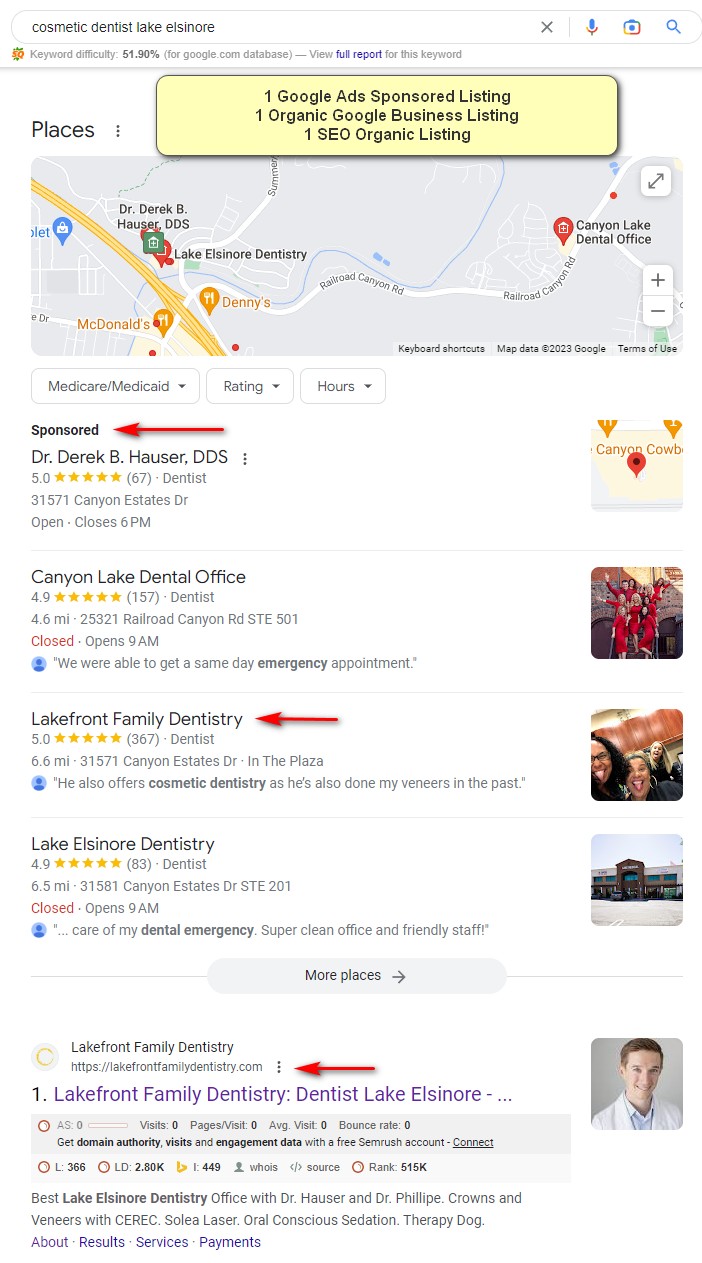
Here are some key reasons why this is important:
- Enhance local visibility: A well-optimized Google Business Listing improves the dental practice’s visibility in local search results, making it easier for potential patients to find the practice when searching for dental services in their area. Physicians Authority ensures that the listing is optimized with relevant keywords, up-to-date information, and engaging content to attract local patients.
- Improve search rankings: SEO optimization of the Google Business Listing can contribute to higher search rankings for the dental practice, which is essential for attracting more organic traffic. By incorporating targeted keywords, categories, and location-specific information, Physicians Authority helps the dental practice rank higher in local search results, making it more likely to be discovered by prospective patients.
- Increase credibility and trust: Managing and maintaining a Google Business Listing with accurate, current information helps build credibility and trust with potential patients. Physicians Authority’s ongoing management ensures that the listing stays up to date with changes in business hours, contact information, and other essential details, making it easier for patients to trust and engage with the dental practice.
- Showcase positive reviews: Google Business Listings provide a platform for customers to share their experiences and leave reviews. Physicians Authority helps dentists monitor and respond to reviews, showcasing the practice’s dedication to customer satisfaction and attracting new patients.
- Engage with customers: Physicians Authority’s weekly management of the Google Business Listing allows dentists to actively engage with their customers through Q&As, updates, and posts. This helps create a sense of community and demonstrates the practice’s commitment to addressing patient needs and concerns.
- Monitor performance: Physicians Authority can also track and analyze the performance of the Google Business Listing, providing valuable insights into user behavior, local search rankings, and other key performance indicators. This data can inform ongoing optimization efforts, helping the dental practice make informed decisions about their marketing strategy.
- Stay ahead of the competition: A well-managed Google Business Listing helps a dental practice stay ahead of its local competition. By ensuring that the listing is continually optimized and up to date, Physicians Authority enables dentists to maintain a competitive advantage and attract more patients.
In conclusion, optimizing and managing a dentist’s Google Business Listing with the help of Physicians Authority is crucial for improving local visibility, building trust with potential patients, and increasing calls and leads. With their expertise in SEO and ongoing management, Physicians Authority helps dental practices enhance their online presence and maintain a competitive edge in the local market.
Utilize Google Ads Pay Per Click (PPC) Advertising the Right Way for Your Dental Practice
Investment in PPC advertising can target potential patients searching for dental services in the area. Platforms like Google Ads, Bing Ads, and Facebook Ads allow for the creation of targeted ad campaigns based on location, demographics, and interests. Tracking campaign performance to identify which keywords and ad placements generate the best results and making data-driven adjustments is crucial.
Google Ads Search and Local Service Ads are powerful advertising tools that dentists can leverage to generate more leads and increase patient acquisition. Both platforms allow dentists to target potential patients in their local area who are actively searching for dental services.
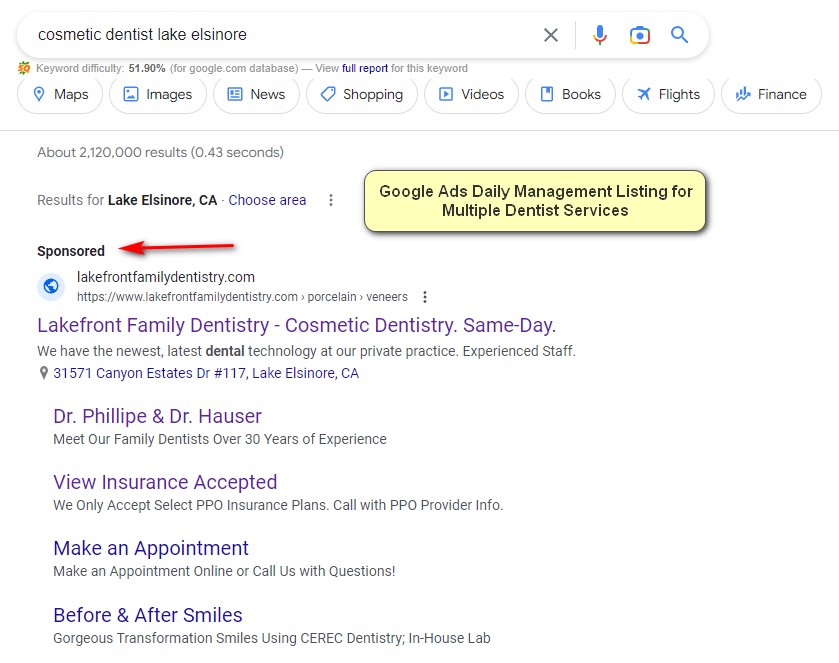
Here is an elaboration on how to utilize each platform effectively:
Google Ads Search Campaigns for Dentists
Google Ads Search campaigns display ads in the search results when potential patients are searching for relevant keywords related to dental services.
Physicians Authority has extensive experience running very successful campaigns for our dentists. Our negative keyword lists alone our worth a fortune!
To get started with Google Ads Search for Your Dental Practice, review a few of the important aspects below.
- Keyword research: Conduct thorough keyword research to identify high-intent keywords related to dental services, treatments, and procedures. Long-tail keywords (e.g., “teeth whitening near me” or “pediatric dentist in [city]”) often have lower competition and higher conversion rates.
- Create ad groups: Organize keywords into themed ad groups to maintain relevance between the keywords and ad creatives.
- Write compelling ad copy: Write clear, concise, and engaging ad copy that highlights the unique selling points of the dental practice, such as advanced technology, expertise, or promotions. Include a strong call-to-action (CTA) to encourage searchers to book an appointment or visit the website.
- Use ad extensions: incorporate ad extensions, such as location, call, sitelink, and callout extensions, to provide additional information and increase the visibility of the ads. This can help improve click-through rates (CTR) and overall ad performance.
- Optimize bids and targeting: Utilize location targeting and bid adjustments to reach potential patients in the local area. Experiment with different bidding strategies, such as manual or automated bidding, to optimize cost-per-click (CPC) and return on investment (ROI).
- Monitor and optimize: Regularly review campaign performance to identify areas for improvement. Adjust keyword bids, targeting settings, and ad copy based on data-driven insights to enhance campaign effectiveness.
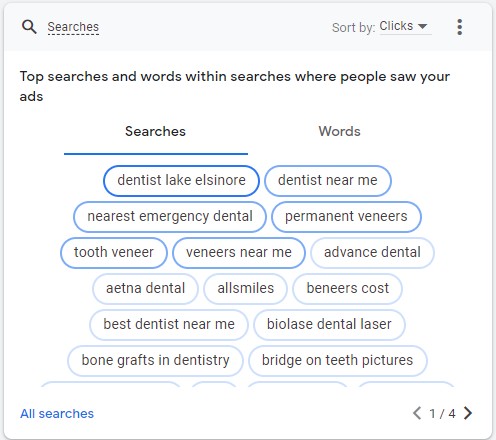
Local Service Ads for Dentists
Local Service Ads (LSAs) are designed specifically for local service providers, including dentists, and appear at the top of Google search results, above traditional search ads. These ads feature a business’s rating, contact information, and hours, making it easier for potential patients to get in touch. This is very different and there is a lot of management involved in LSA, so make sure you have the staff to work on this or you can hire Physicians Authority to do it for you.
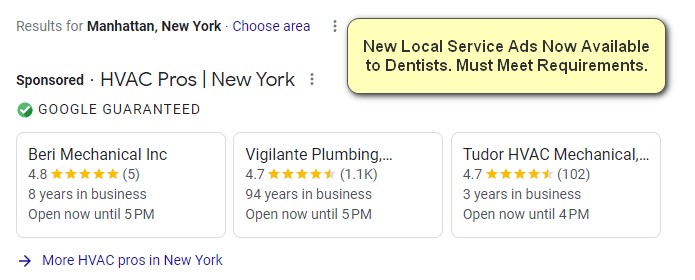
Here’s how dentists can use LSAs to generate leads:
- Sign up for local services through Google: Visit the Local Services by Google homepage, select the dental profession, and sign up for an account.
- Complete the verification process: Follow the required steps to verify the dental practice, including providing proof of licensure, insurance, and background checks if necessary.
- Set a weekly budget: Determine an appropriate weekly budget for the LSA campaign based on the desired number of leads and cost per lead.
- Define the service area and categories: Specify the geographical area the dental practice serves and select relevant dental service categories to ensure ads appear for the right searches.
- Collect and manage reviews: Encourage satisfied patients to leave reviews on the Google My Business page, as reviews play a significant role in the performance of LSAs. Respond to and manage reviews to maintain a positive online reputation.
- Monitor and adjust: Review the LSA campaign performance regularly and make data-driven adjustments to the budget, targeting, and ad content to maximize lead generation.
Track and Measure Marketing Performance
Performance tracking of marketing efforts using analytics tools like Google Analytics, Facebook Insights, and email marketing software is essential. Regularly reviewing data helps determine which strategies work, which require adjustments, and which should be replaced.
Analyzing key performance indicators (KPIs), such as website traffic, social media engagement, email open rates, and conversion rates, ensures the achievement of marketing goals and the optimization of return on investment (ROI).
Dentist Website Google Analytics Analysis
Google Analytics is a powerful tool that enables dentists to track and measure the performance of their marketing efforts. By understanding how patients interact with the practice’s website and identifying which marketing channels are most effective, dentists can make data-driven decisions to optimize their campaigns and improve patient acquisition.
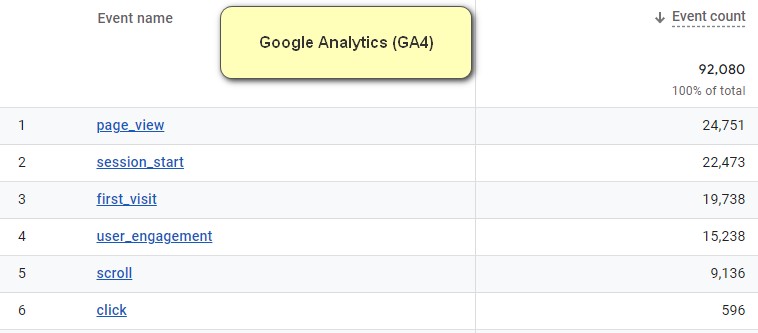
Here are dental marketing strategies that include ways dentists can use Google Analytics to assess their marketing performance:
- Set up goals: Define specific goals in Google Analytics that align with the practice’s marketing objectives. Goals can include form submissions, appointment bookings, or downloads of educational materials. Tracking these conversions helps dentists understand which marketing channels and campaigns are driving desired actions.
- Analyze traffic sources: Google Analytics provides information on various traffic sources, such as organic search, paid search, direct, referral, and social media. Understanding which sources drive the most traffic and conversions helps dentists optimize their marketing efforts and allocate resources effectively.
- Track keywords and SEO performance: monitor the performance of targeted keywords and their impact on website traffic. This data can help identify opportunities for SEO improvements, enabling dentists to enhance their website’s visibility in search engine results.
- Evaluate user engagement: Examine metrics like bounce rate, pages per session, and average session duration to understand how visitors interact with the website. High bounce rates or low engagement may indicate a need for website improvements, such as updating content, optimizing page load times, or enhancing navigation.
- Monitor the effectiveness of content: Track the performance of blog posts, service pages, and other content on the website. Analyze metrics like page views, time on page, and conversion rates to determine which content is resonating with visitors and driving conversions.
- Assess location data: analyze geographic data to understand where website visitors are located. This information can help dentists tailor their marketing efforts to target specific regions or communities, improving the efficiency of their campaigns.
- Utilize audience segmentation: Use Google Analytics’ audience segmentation features to group website visitors based on factors like demographics, interests, and behavior. By understanding these segments, dentists can create targeted marketing campaigns that resonate with their audience and generate more leads.
- Track campaign performance: If running paid advertising campaigns, such as Google Ads, use Google Analytics to track campaign performance, including click-through rates, cost per click, and return on investment. This data can help identify which campaigns are most effective and guide future marketing decisions.
- Monitor mobile versus desktop usage: Assess the proportion of website traffic coming from mobile devices versus desktop computers. If a significant portion of visitors are using mobile devices, ensure the website is mobile-responsive and optimize marketing efforts for mobile users.
- Set up custom reports and dashboards: Create custom reports and dashboards in Google Analytics to track the specific metrics most relevant to the dental practice’s marketing goals. Regularly review these reports to stay informed about the performance of marketing efforts and make data-driven adjustments as needed.
By leveraging the data and insights provided by Google Analytics, dentists can effectively measure their marketing performance, identify areas for improvement, and optimize their campaigns to drive patient acquisition and practice growth. Regularly reviewing and analyzing the data will help dentists make informed decisions and stay ahead of the competition.
Facebook and Instagram Analytics for Your Dental Practice
Facebook and Instagram Analytics, also known as Facebook Insights and Instagram Insights, are powerful tools that help dentists track and measure the performance of their marketing efforts on these social media platforms. By analyzing data on audience engagement, content performance, and ad campaigns, dentists can make data-driven decisions to optimize their marketing strategies.

Here are some dental marketing strategies and ways dentists can use Facebook and Instagram analytics to assess their marketing performance:
- Understand audience demographics: Examine audience demographics, such as age, gender, and location, to gain insights into the practice’s target audience. This information helps dentists create content and marketing campaigns that resonate with their audience, increasing engagement and conversions.
- Analyze content performance: Evaluate the performance of organic posts, including reach, engagement (likes, comments, and shares), and click-through rates. Identifying top-performing content helps inform future content strategies and highlights which types of posts resonate most with the audience.
- Monitor reach and impressions: Track the total number of people who see the practice’s content (reach) and the number of times the content is displayed (impressions). Understanding these metrics helps dentists assess the effectiveness of their content strategy and identify opportunities for improvement.
- Evaluate engagement rate: Calculate the engagement rate by dividing the total engagement (likes, comments, and shares) by the total reach or impressions. A high engagement rate indicates that the content resonates with the audience and encourages further interaction.
- Assess post timing and frequency: Identify optimal posting times and frequencies by analyzing when the audience is most active and engaged. Scheduling content to align with these periods can help maximize reach and engagement.
- Track hashtag performance (Instagram): monitor the performance of hashtags used in Instagram posts. Understanding which hashtags drive the most engagement can help optimize content strategy and increase visibility in user feeds.
- Measure Instagram Stories performance: evaluate the performance of Instagram Stories by analyzing metrics such as views, reach, impressions, and completion rate. This data helps dentists understand how their audience interacts with Stories content and identify opportunities for improvement.
- Analyze ad campaign performance: If running Facebook or Instagram ad campaigns, use the Ads Manager to track key metrics such as reach, impressions, click-through rates, cost per click, and return on investment. This information helps identify which campaigns are most effective and informs future marketing decisions.
- Leverage Facebook and Instagram Audience Insights: Use the Audience Insights feature to gather data on the practice’s target audience, including demographics, interests, and online behavior. These insights can help create more targeted and effective marketing campaigns.
- Monitor follower growth and retention: Track the growth and retention of the practice’s social media following. A consistent increase in followers is indicative of a successful marketing strategy, while a stagnant or declining follower count may signal a need for adjustment.
By leveraging Facebook and Instagram Analytics, dentists can effectively track their marketing performance, identify areas for improvement, and optimize their campaigns to increase engagement and conversions. Regularly reviewing and analyzing the data will help dentists make informed decisions and stay ahead of the competition in the ever-evolving social media landscape.
Which Marketing Strategies Work Best for Your Dental Practice?
While each marketing strategy and platform has its own strengths and potential for attracting new patients, a combination of multiple strategies typically yields the best results. However, among the platforms and strategies discussed above, search engine optimization (SEO) and Google Ads (search and local service ads) tend to be particularly effective at driving a high volume of new patients and revenue for your dental practice.
Search Engine Optimization (SEO): A strong SEO strategy can help a dental practice rank higher in search engine results, leading to increased website traffic, more appointment bookings, and ultimately higher revenue. By focusing on targeted keywords and creating valuable, relevant content, your dental practice can attract potential patients who are actively seeking dental services. In addition, local SEO tactics, such as optimizing Google My Business listings and cultivating positive reviews, can help the practice become more visible to users searching for dental services in their area.
Google Ads (Search and Local Service Ads): Google Ads allows dental practices to bid on targeted keywords, displaying their advertisements to users searching for dental services. By creating well-structured and engaging ad campaigns, your dental practice can attract potential patients with a high intent to book appointments. The ability to target ads based on location, demographics, and keywords ensures that the practice’s ads are reaching the most relevant audience. Local service ads, which are specific to certain industries and areas, can help dental practices appear at the top of search results when users search for local services. These ads can significantly boost visibility and drive leads to the practice, generating increased revenue.
Although SEO and Google Ads are often considered highly effective at driving new patients and revenue for dental practices, it is essential to maintain a holistic approach to online marketing. This includes leveraging social media platforms, online reviews, and referral programs, among other strategies. By combining these approaches, a dental practice can maximize its online presence, reach a diverse audience, and generate consistent growth in new patients and revenue.
Physicians Authority is a top digital marketing agency with over 19 years of experience that has made clients over $70 million in revenue. It is time to hire a digital marketing company that knows exactly what to do when it comes to your marketing services. Get a dental website you love. We specialize in dental SEO and dental digital marketing and have one of the most amazing marketing agencies for dentists in the United States. Dentists and dental practices stop wasting their marketing budget when they hire us, and we will toot our own horn being a full-service dental marketing agency you need to level up!
Start Your Medical Marketing Today!
Other Blogs You May Be Interested In
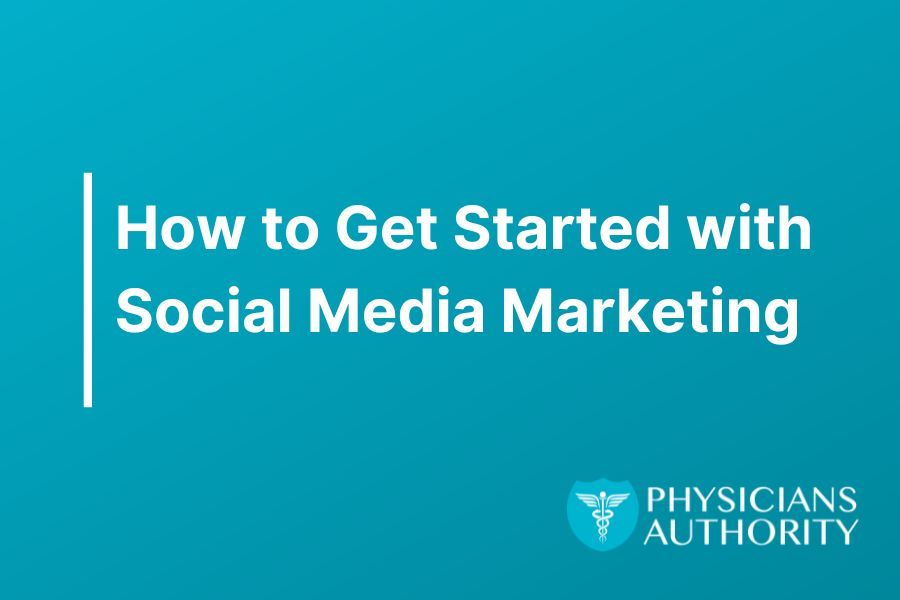
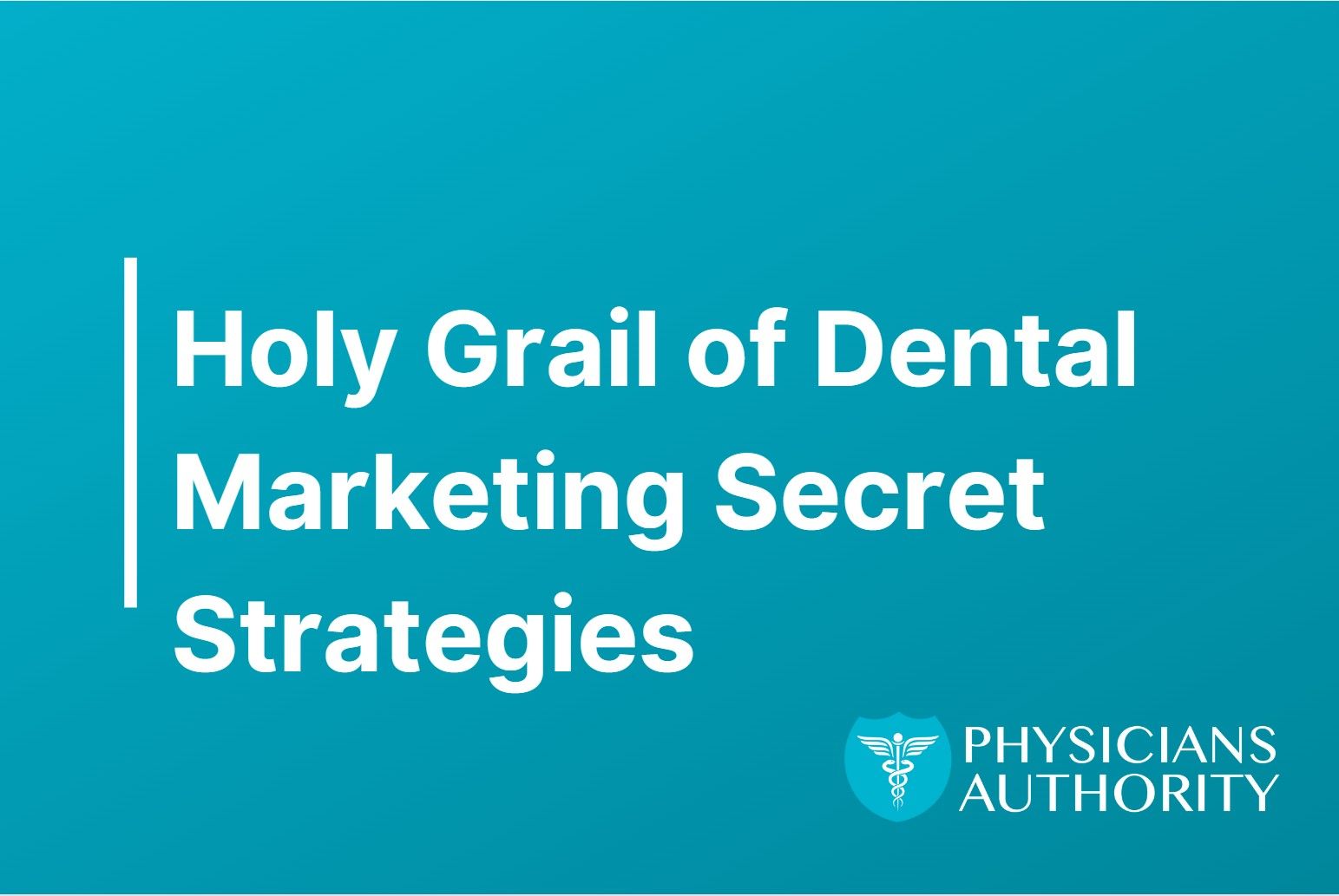
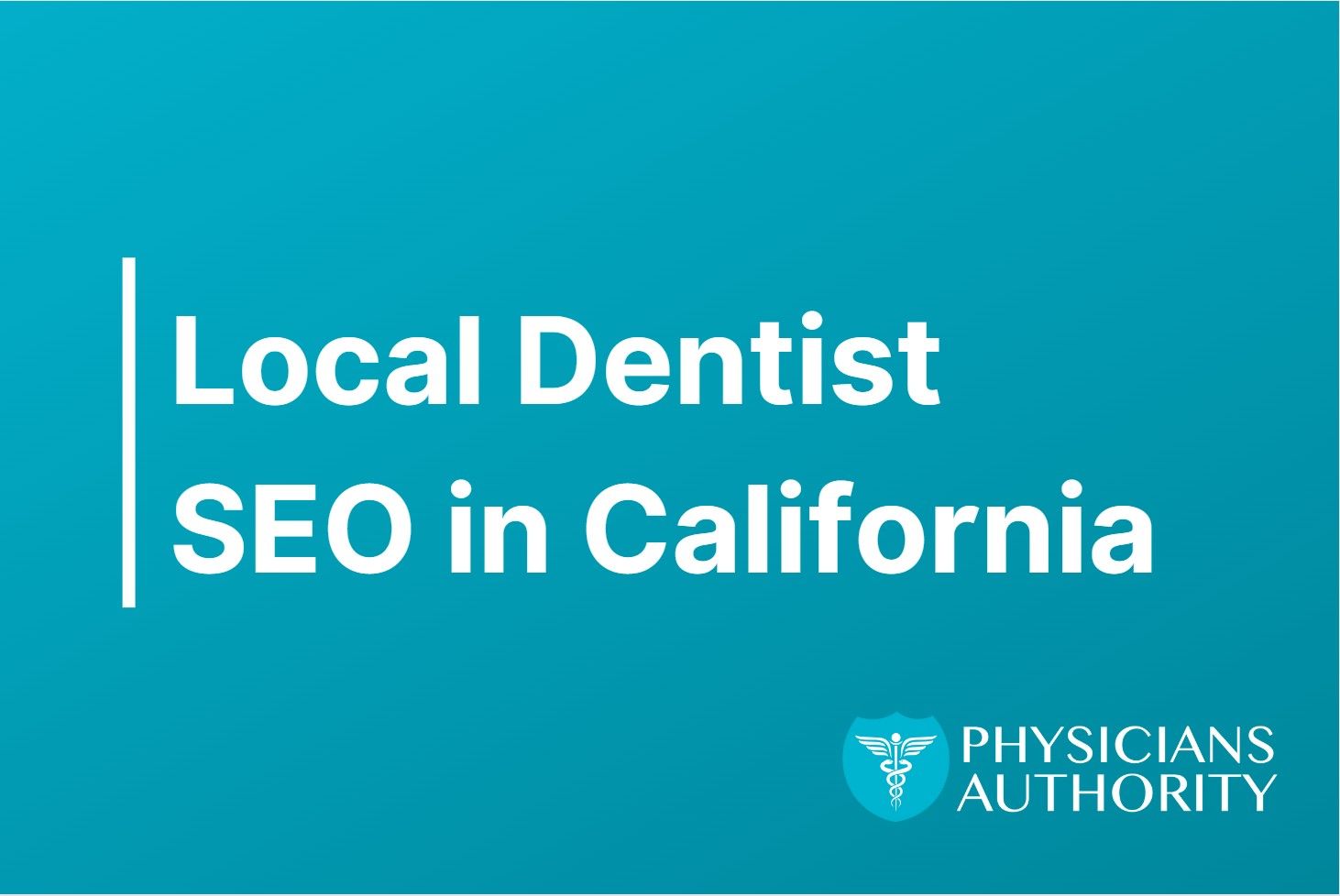

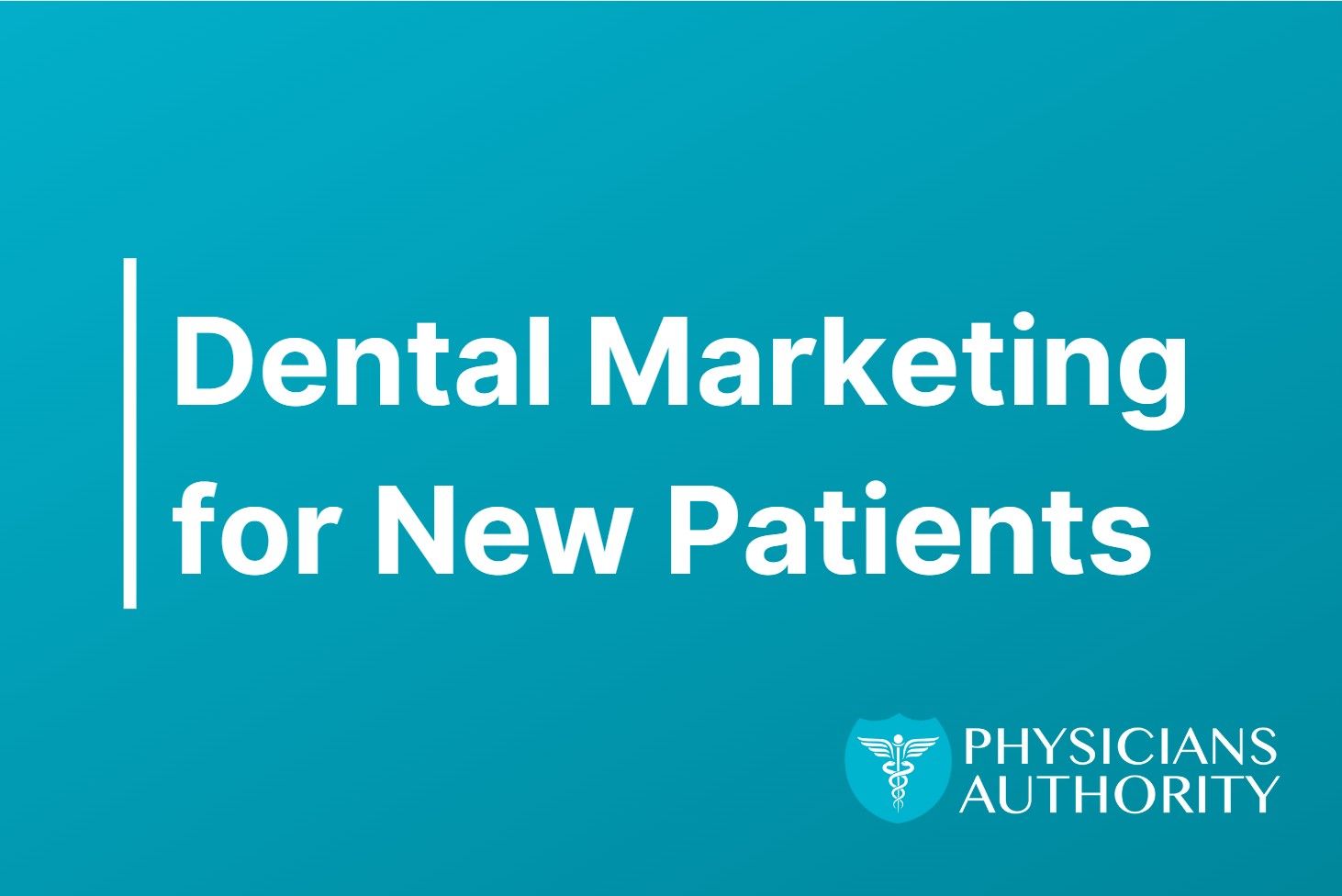





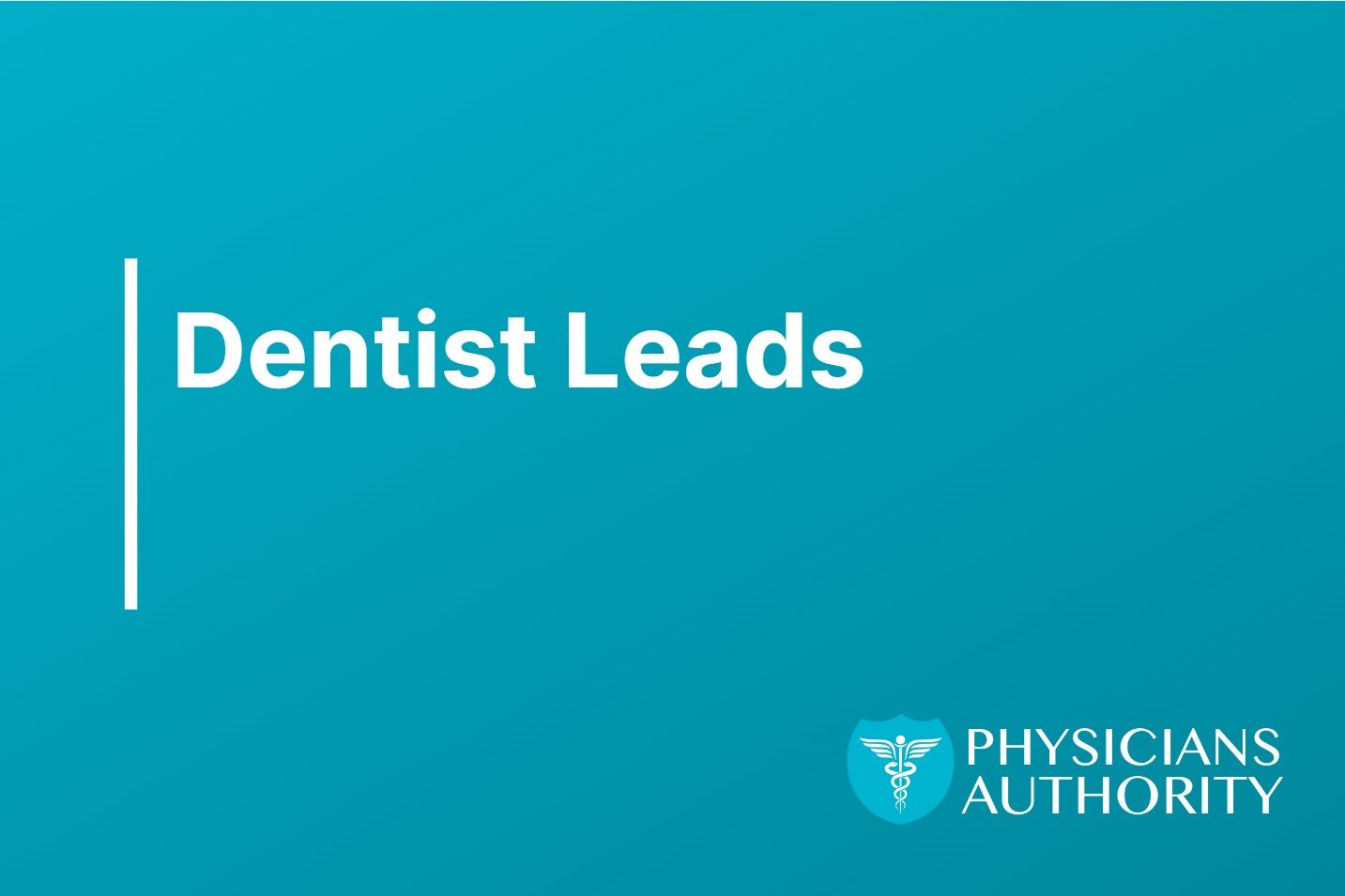

Leave a Reply